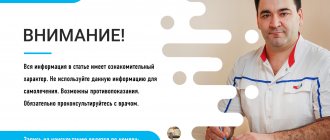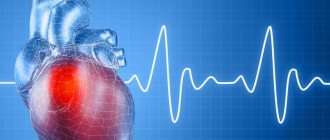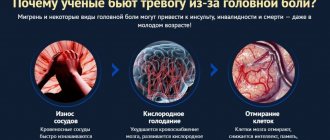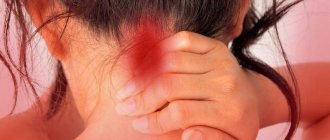- Types of Heart Diseases
- Diagnosis and treatment
- Our doctors
One of the most common reasons why patients go to medical care is short-term pain in the heart. But sometimes they last for hours and can be felt for days on end. Unpleasant sensations intensify when a person breathes, changes position, or moves the upper shoulder girdle. The pain syndrome worsens during exercise, as well as during eating and even at rest.
Most people are familiar with the feeling of discomfort directly in the thoracic region, or on the left, that is, where the heart is located. This is worrying. Ignoring it simply won’t work. After all, when the heart pierces, the pain tends to press, burn, ache, pull, bake and even pierce. Sometimes it is felt only in a separate area or spreads directly along the sternum, radiating to the cervical or shoulder region, in the abdominal cavity or under the shoulder blade, causing terrible discomfort.
There are a huge number of reasons for this symptom: myocardial infarction, ischemia, rheumatic heart disease. But most often the source of pain is neuroses, diseases of the ribs, diseases of the spine, disruption of the gastrointestinal tract and other pathological processes. During the examination, a medical specialist will determine the cause of the identified syndrome.
Common causes of stabbing pain
During my medical practice, I have met hundreds of patients with complaints of tingling in the heart, and they, of course, always cause suspicion. But, fortunately for everyone, dangerous cardiovascular pathologies are manifested by pain of a different nature - burning, baking, pressing, bursting. Among such life-threatening diseases, I can highlight myocardial infarction, unstable angina, dissecting aortic aneurysm and some others. Nevertheless, all stabbing sensations in the projection of the heart can be divided into two large groups.
Heartfelt
Cardialgia of a stabbing nature, emanating directly from the heart, is not so common, but can pose a significant danger to life:
- inflammatory processes - dry pericarditis, myocarditis;
- some rhythm disturbances - extrasystole;
- mitral valve prolapse - sagging of its valves during contraction into the cavity of the left atrium;
- hypertensive crisis and its complications.
I also want to note that the intensity of the pain may increase with deep breaths, strong coughing or sneezing.
Extracardiac
Due to the densely branched system of nerve endings, pain in the heart area can radiate from the spine and gastrointestinal tract. They can also occur during mental disorders and during attacks of dry, strong, hacking cough due to lung diseases.
In my medical practice, stabbing pain in the left half of the chest occurred with the following pathologies:
- hernias of the thoracic spine - sac-like protrusions that occur when a spinal disc ruptures;
- intercostal neuralgia - inflammation of the nerve endings running between the ribs;
- radiculitis is an inflammatory process affecting the nerve roots;
- neurosis and neurotic conditions are a group of diseases associated with disorders in the psycho-emotional sphere, more often diagnosed in the young population;
- vegetative-vascular dystonia - dysfunction of the autonomic nervous system, which may cause slight tingling in the heart area;
- osteochondrosis of the thoracic spine - a complex of degenerative-dystrophic changes in the intervertebral discs (read about how to distinguish the heart pain of this pathology here);
- Shingles is a viral disease characterized by the appearance of a herpetic rash.
The main features of extracardiac pain are their intensification when turning the body, raising the arms and the lack of effect from taking Nitroglycerin or Molsidomin.
What to do before the ambulance arrives?
If myocardial infarction or pulmonary embolism develops, proper treatment can only be carried out in a hospital setting.
Even before the ambulance arrives, you should:
- Take one tablet of aspirin, nitroglycerin. Aspirin reduces blood clotting, nitroglycerin improves blood supply to the myocardium.
- Make breathing as easy as possible. It is important to provide fresh air. To do this, you need to open a window in the room and remove clothes that are constricting your chest, for example, unbutton the buttons of a shirt.
- Take a comfortable position. A semi-sitting pose can make breathing easier, which you can take by placing several pillows under your head and shoulders. Another option is a sitting position with your elbows resting on your knees or a table with your torso slightly tilted forward. (Fig. 4).
- Try to calm down and not panic. During stress, the heart rate, respiratory movements and the heart's need for oxygen increase. All this aggravates the course of myocardial infarction and pulmonary embolism and worsens the prognosis.
Figure 4. Poses that make breathing easier. Source: MedPortal
How to determine the source
In each specific case, the most important thing is to detect the source of pain. I do not recommend trying to figure out this problem on your own; it is better to seek advice from a competent specialist. Pain syndrome in the left half of the chest almost always requires additional diagnostic procedures.
5 Signs of Heart Disease
The presence of a symptom from the list below should make you want to visit a doctor. This is especially true for people who have a history of increased body weight, high blood cholesterol, arterial hypertension and diabetes mellitus. The clinical manifestations of heart disease are listed in order from most serious to least dangerous:
- Feeling of discomfort or burning, burning, bursting pain in the sternum. They are capable of spreading to the left half of the body, the lower jaw, and less often to the right shoulder or forearm. Often the pain syndrome is provoked by physical exertion or severe psycho-emotional shock.
- Episodes of loss of consciousness that occur spontaneously or when lifting heavy objects. These manifestations may be associated with Morganié-Adams-Stokes syndrome - fainting caused by a sharp decrease in cardiac output.
- Shortness of breath is a feeling of lack of air. Its cause must always be differentiated from diseases of the bronchopulmonary system.
- Swelling of the legs, worsening towards the end of the day. They start from the feet and move to the legs, thighs, perineum and can spread to the entire body.
- Fast fatiguability. It should especially alert young people. If you experience severe weakness when performing simple activities (for example, climbing 1-2 floors), check your heart immediately.
Surveys
When patients contact me with complaints of stabbing pain in the heart area, I first conduct a detailed survey. It is important to clarify the psycho-emotional status of the patient and the presence of “overlapping” diseases. The next step is to measure blood pressure. Next, I carry out palpation (palpation), during which special attention should be paid to the intercostal spaces. Among the general clinical methods of examination, auscultation can also help, as a result of which various rhythm disturbances are detected. Stitching, cutting sensations in the heart area can occur during extrasystole - untimely contractions.
To identify cardiac pathology, I can prescribe the following laboratory tests and instrumental methods:
- lipid profile;
- electrocardiogram;
- echocardiography;
- load tests - bicycle ergometry, treadmill;
- X-ray, CT or MRI of the thoracic spine;
- ultrasound examination of internal organs.
How is diagnosis carried out in patients who often experience heart pain?
An ECG is the most important initial diagnostic procedure for frequent chest pain. Abnormalities detected by an ECG help doctors determine the type of treatment needed. Abnormalities on the ECG also help determine where the heart muscle has been damaged. If several ECGs recorded over a period of several hours are completely normal, doctors consider a heart attack unlikely.
Measuring levels of certain substances (called cardiac markers) in the blood also helps doctors diagnose abnormalities. These substances are usually found in the heart muscle, but only enter the bloodstream when it is damaged or dead. The most commonly measured are heart muscle proteins called troponin I and troponin T, and an enzyme called creatine kinase. Blood levels rise within 6 hours of a heart attack and remain elevated for several days. Levels of cardiac markers are usually measured upon admission to the hospital and at 6 to 12 hour intervals over the next 24 hours.
When ECG and cardiac markers do not provide sufficient information, echocardiography can be performed. It may show decreased mobility of part of the left ventricular wall. This suggests damage due to a heart attack. Other tests are used to determine whether a person needs additional treatment or is likely to have heart problems. For example, a person may have to wear a Holter monitor, which records the heart's electrical activity over a 24-hour period. This procedure allows doctors to determine whether a person has an abnormal heart rhythm (arrhythmia) or episodes of poor blood flow without symptoms (silent ischemia).
An exercise test (electrocardiography done during exercise) before or shortly after discharge can help determine how well a person is doing after the attack and whether ischemia continues.
During an exercise tolerance test (stress test), a person walks on a treadmill at an accelerating pace. A blood pressure cuff monitors your blood pressure throughout the procedure. The video monitor displays the pulse and ECG. The results help determine the presence of coronary heart disease.
How to relieve pain and what to do next
If your heart is racing at home, then first you need to stop worrying. Remember that cardialgia of this nature is rarely associated with cardiovascular pathology. If the medicine cabinet contains sedatives (valerian tablets, motherwort, Tricardin drops, etc.), then their use is acceptable.
The next step is a visit to the doctor - ignoring heart pain is unacceptable. Only a specialist will be able to make a differential diagnosis of pain occurring in the chest.
For osteochondrosis or hernia of the thoracic spine, the use of non-steroidal anti-inflammatory drugs as first aid is permissible:
- "Nimesulide";
- "Diclofenac";
- "Ibuprofen";
- "Meloxicam";
How does pain manifest when inhaling?
This can range from mild discomfort to severe pain localized behind the sternum (Fig. 1). As a concomitant symptom, shortness of breath often appears - the inability to take a normal breath and/or exhale. Horizontal position of the body, playing sports or emotional stress can aggravate pain and shortness of breath, causing a feeling of lack of air.
Figure 1. Chest pain when inhaling. Source: MedPortal
Expert advice
- Buy a device for measuring blood pressure and check the readings if stabbing pain occurs. You can read about which hypertension pills are the most effective here.
- To clarify the disease that provoked the pain syndrome, you can contact general practitioners, cardiologists and neurologists.
- Examine the thoracic spine for osteochondrosis. In the vast majority of cases, it is he who is the source of pain.
Clinical case
A 24-year-old man came to me with complaints of stabbing pain in the heart area, aggravated by coughing and sudden turns of the body. The deterioration of the condition has been observed over the last 3 days. Objectively: cardiac activity is rhythmic on auscultation, blood pressure is 110/70 mm Hg. Art., heart rate 72, t= 36.6 °C. Upon palpation in the area of the IV intercostal space, a sharp increase in pain was noted. When turning the body to the painful side, the intensity of the pain syndrome also increased. The diagnosis was made: “Intercostal neuralgia.” The patient received a course of non-steroidal anti-inflammatory drugs (Diclofenac) for 7 days. After this, he noted a significant improvement in his general condition and the disappearance of stabbing pain in the heart area.






